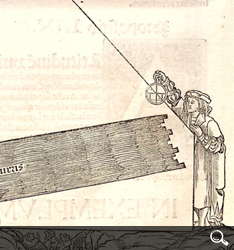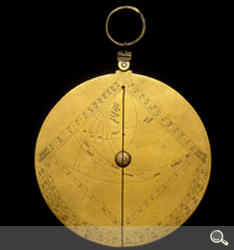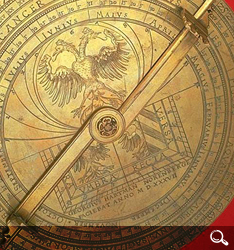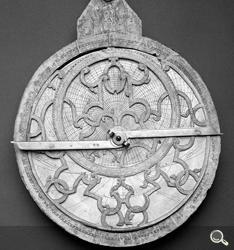

Before Simeon De Witt: European Astrolabes
An observer holds an astrolabe vertically and measures the altitude of a star using a rotating set of sights. Knowing the angular height of the object, he or she then sets a rotating star map with respect to a grid of lines drawn for the observer’s latitude. This gives the position of all the other stars on the map.
De Witt’s device does not do all of this, however. Although it is similar in size to some astrolabes, it could not be used to make observations. De Witt referred to it as an astrolabe; that word was not widely used in his time and we do not know how he learned it. It is actually a star map, a part of an astronomical instrument called an astrolabe.
An observer measuring the height of the sun by looking through the sights of an astrolabe. This illustration is from a 1513 book by German professor of mathematics and astronomy Johann Stoeffler.Courtesy of Smithsonian Institution Libraries
English Astrolabe
This astrolabe dating from about 1450 has twenty-five star pointers shaped like heads of dogs. The grid of lines below the star map is for setting star positions. It is designed for an observer standing at the latitude of London.
German Astrolabe
This 1537 instrument is by Georg Hartman of Nuremburg. It has twenty-seven star pointers, and several plates for different latitudes. The sights are attached to the back.
French Astrolabe
Some astrolabes had scales printed on paper, like this one made by Philippe Danfrie of Paris around 1600. The star map has twenty-eight flame-shaped pointers. Below it are four plates with scales for different latitudes. The sights are on the back.






